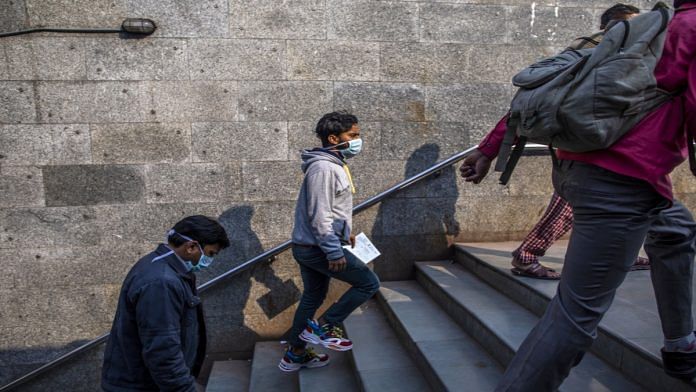India must ‘flatten the curve’, especially for those at the bottom of the pyramid. It has been nearly a week since the World Health Organisation declared the novel coronavirus a pandemic. As of Monday, the number of positive cases worldwide stood at 150,000 and the number of deaths at 9,000.
Most governments are now following the rule of social distancing. They are shutting down schools, colleges, universities, gyms and placing prohibitions on large gatherings of people. Companies are also increasingly telling employees to work for home in order to ‘flatten the curve‘.
However, this remains a distant reality for the hundreds of thousands of domestic workers, safai karamcharis, delivery people and others in the unorganised sector. Physical interaction is vital to their survival and work from home is an unaffordable luxury.
In India, COVID-19 is an infection coming from the rich and infecting the poor, and yet, the poor are having to bear a large part of the burden and risk.
Also Read: Coronavirus inspires zero contact, only delivery from Swiggy, Zomato, Domino’s, McDonald’s
An ‘urban middle class solution’
In a recent article, community physicians Vijay Gopichandran, Sudharshini Subramaniam and Vinod H. Krishnamoorthy wrote why social distancing was bound to fail for a predominant section of India’s population.
Through the case of a patient (Kamala) who had presented COVID-19-like symptoms, the three physicians argued that the social distancing solution is both impractical and discriminatory for the poor. “Most public health advisories that have been released in the past few weeks are highly urban upper and middle class centric. Kamala and her likes, who must get out there to work in order to make a livelihood, cannot work from home, and cannot isolate or quarantine themselves,” they wrote.
This is more so because of limited job security and the lack of safeguards like paid sick leave. Lockdowns and restrictions will severely impact the marginalised, who run the risk of losing their jobs.
This problem gets all the more exacerbated considering that these populations live in cloistered and crowded spaces, making it impossible for them to practice social distancing and limit community transmission.
It is ironic that while privileged urban classes are choosing to stay at home out of the fear of catching and transmitting the infection, the domestic workers they employ are still expected to show up for work.
Also Read: Hong Kong shutdown is a lesson to the world in halting virus
Social distancing through social solidarity
Although social distancing as this Washington Post article proves is undoubtedly a good model to follow in an epidemic, it can only work effectively if special care and protection are given to the vulnerable classes.
Starting with the MGNREGA scheme, the government should consider ways to ensure social distancing at work while assuring safeguards to livelihoods. Although this will involve rampant changes to the current labour laws in the country, perhaps the coronavirus pandemic can become an opportunity for the proper implementation of legislation that can help the disenfranchised workers.
However, this means little if the privileged few can’t go beyond the great irony playing out in their own cushy homes and assure paid leaves to the domestic workers they employ. After all, it’s only through greater social solidarity that social distancing can become effective.
Views are personal.




Of the lower income working class, there are 3 groupings:
1. Domestic workers: Maids, Drivers,. Etc.
2. Corporate workers: Lower level employees of companies – peons, housekeeping staff, delivery persons, etc.
3. Self employed: starting from road side hawkers to small business owners.
For the first category, it is up to their employers – people like you and I – to ensure that they have “Paid Time-off”. Remember that they are human too. And if that does not cut any ice with you, do remember that if you do not help them stay safe, neither is your home safe for they will bring in whatever they have caught.
For the second, employers have to step in along with the Govt.
For the last, the Govt., has to step in.
If no other plea works for you and you are unwilling to sacrifice for the sake of those less privileged, remember this – COVID19 does not discriminate and unlike in other circumstances, you, the Rich and Middle-class, have no where to run!!!!
You are trapped in the same cities as the poor and breath the same air!!!
Help them. Or suffer their fate. Sooner or later.
If people who can work form home dont come to public spaces. It gives space social distancing for people who have to work physically. So I think remote workers should vacate spaces for people who cannot work remotely.